Exception Handling in .NET Framework презентация
Содержание
- 2. Contents
- 3. 1. Introduction to structured exception handling
- 4. Main task – correct operation of the application There are possible
- 5. Obsolete check-based method Obsolete error handling method is based on multiple
- 6. Structured exception handling Modern way to handle errors provides using of
- 7. 2. Construct «try..catch»
- 8. Simplest "try..catch" constuct try {
- 9. "try..catch" construct with specific exception try
- 10. Cascade sections of catch try
- 11. "try..catch" construct with instance of exception
- 12. 3. «Exception» class and exception hierarchy in.NET Framework
- 13. Exception class Exception is a base class for all exceptions исключений
- 14. Exception hierarchy in .NET Framework
- 15. 4. Exception throwing and re-rising
- 16. Exception throwing
- 17. Exception re-rising
- 18. 5. Creating own exceptions
- 19. Exception declaration
- 20. MSDN recommendations for exception declarations
- 21. 6. Construct «try..finally»
- 22. Using finally «try..finally» used when it is required to guarantee execution
- 23. 7. Best practices for exception handling
- 24. Best practices for exception handling Do not catch general exceptions (do
- 25. 8. References to additional sources MSDN recommendations for creating exceptions: http://msdn.microsoft.com/en-us/library/ms173163.aspx
- 26. Contacts
- 27. Скачать презентацию







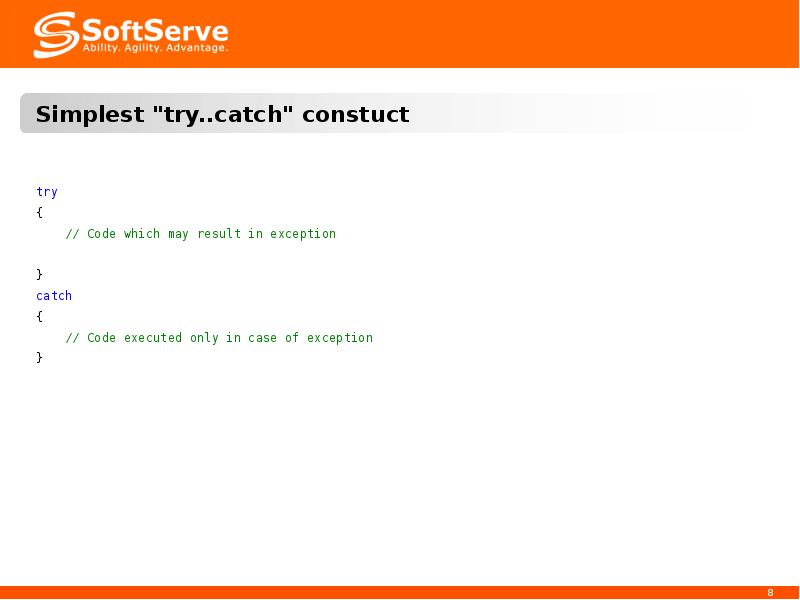

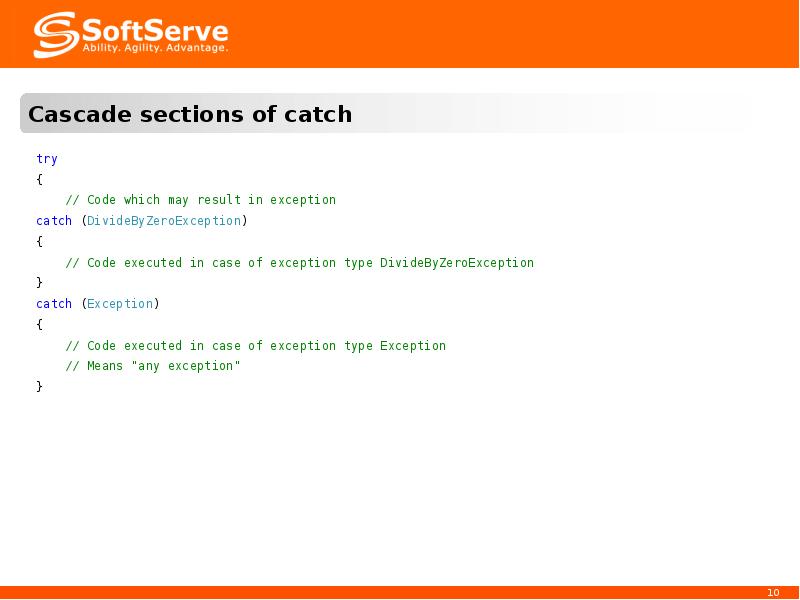
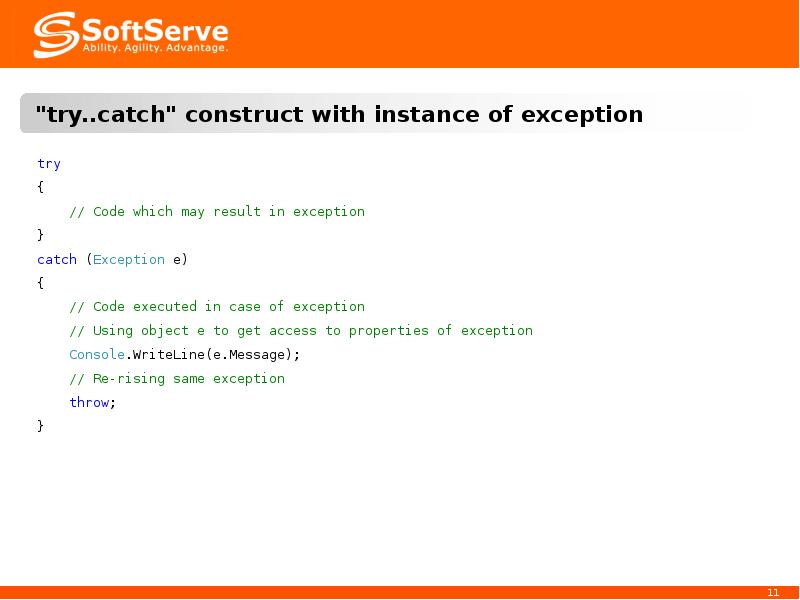
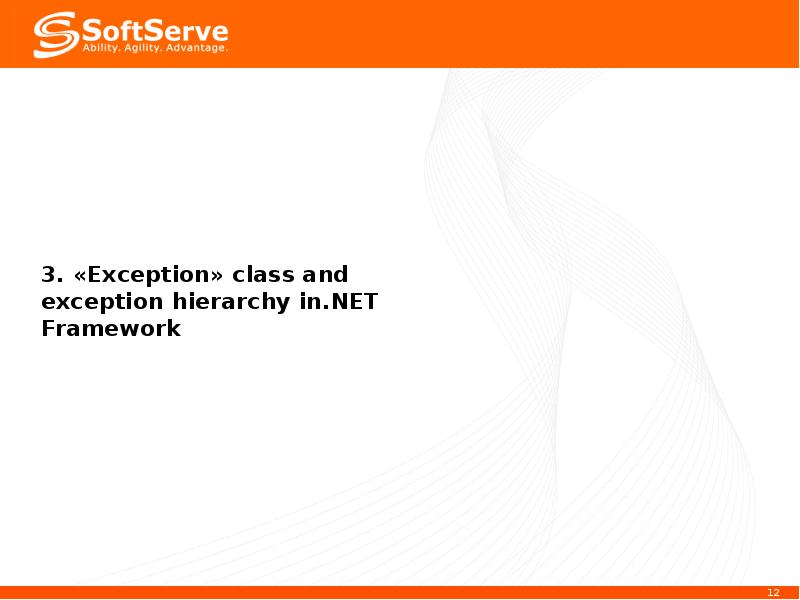
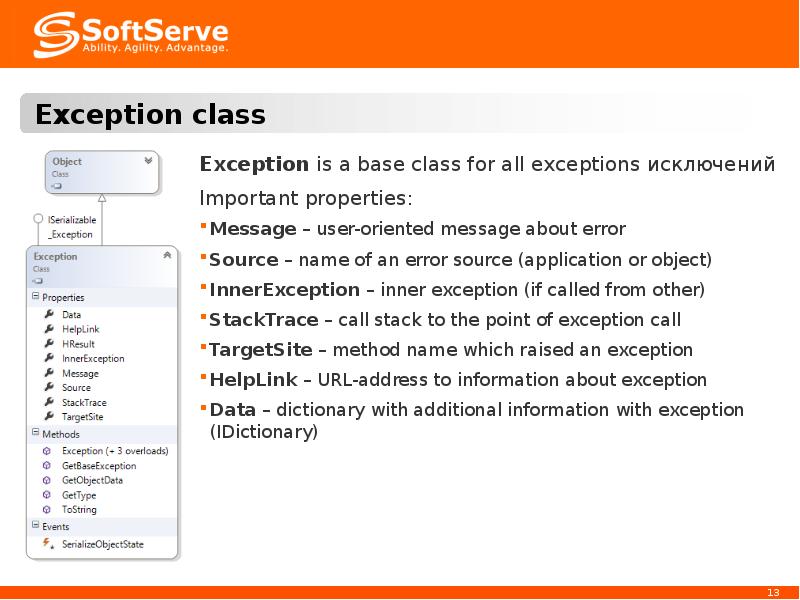
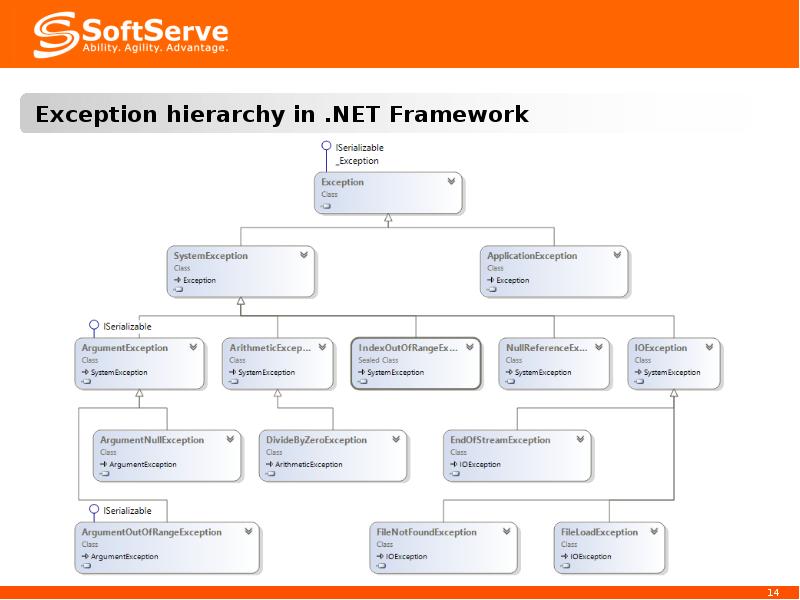
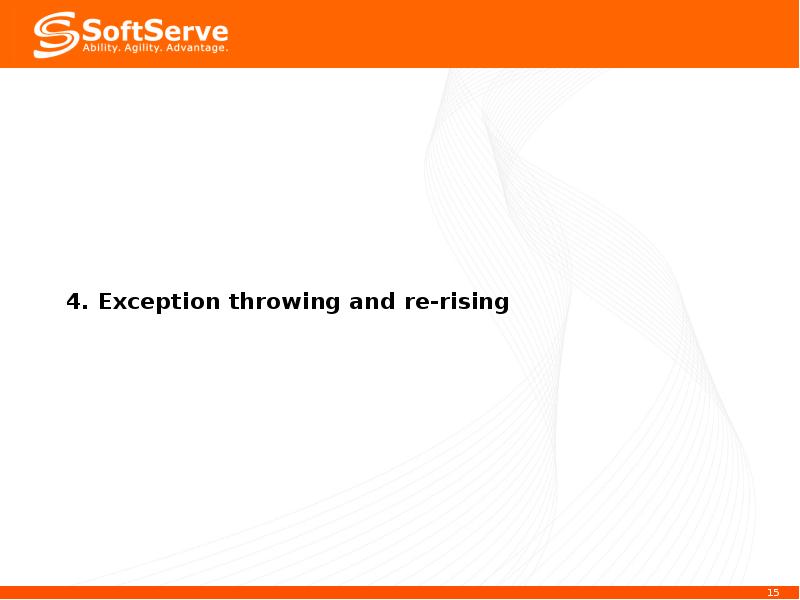
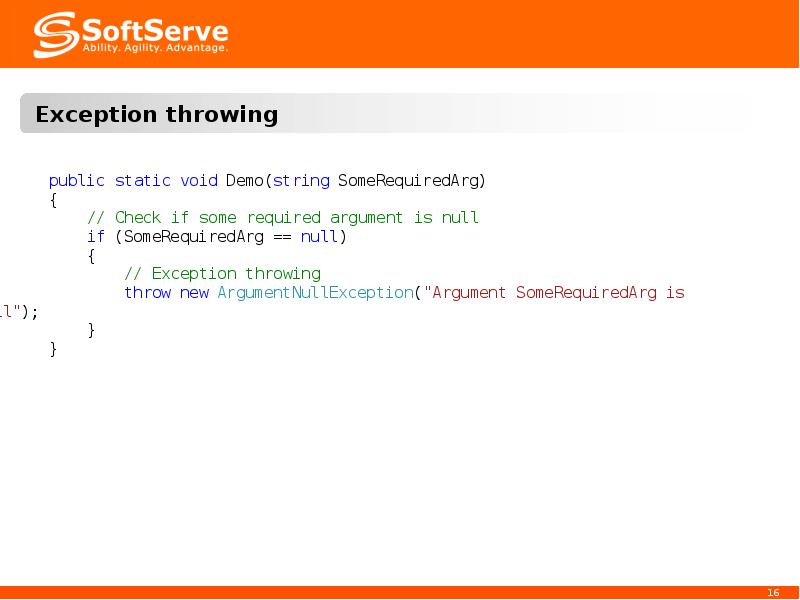
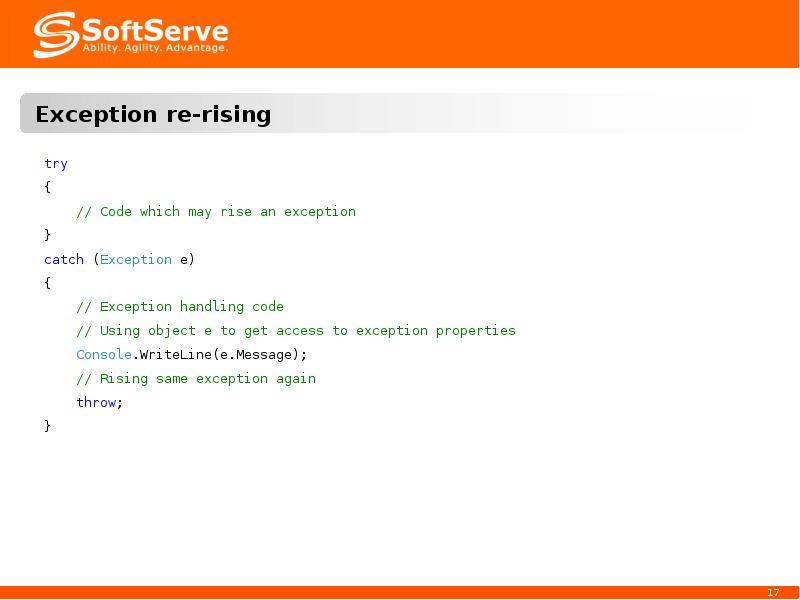
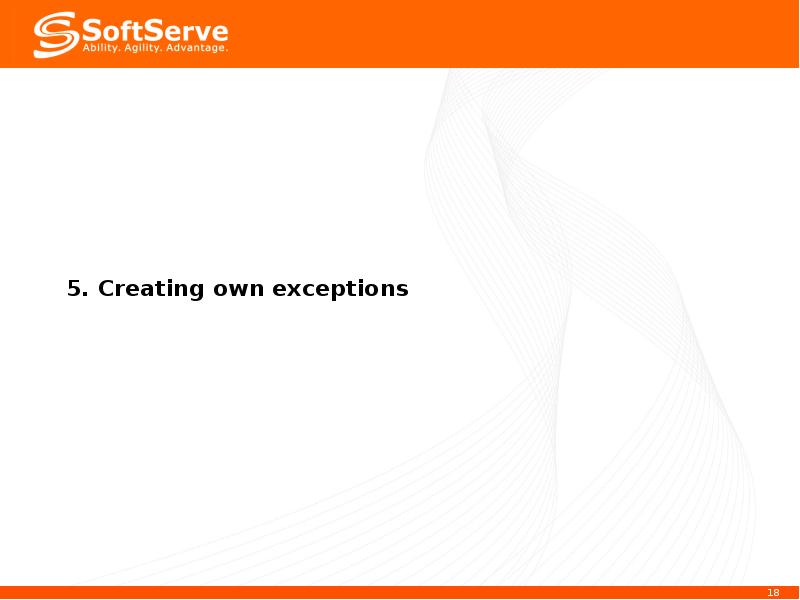
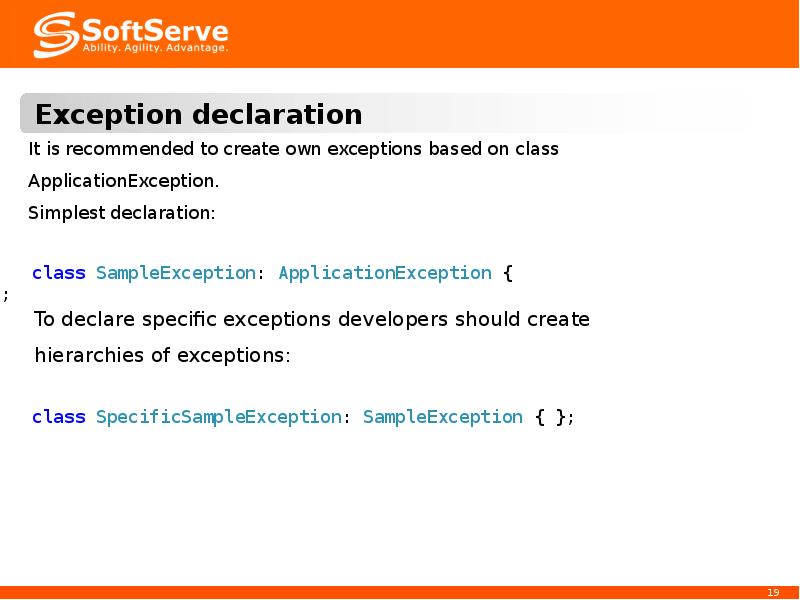
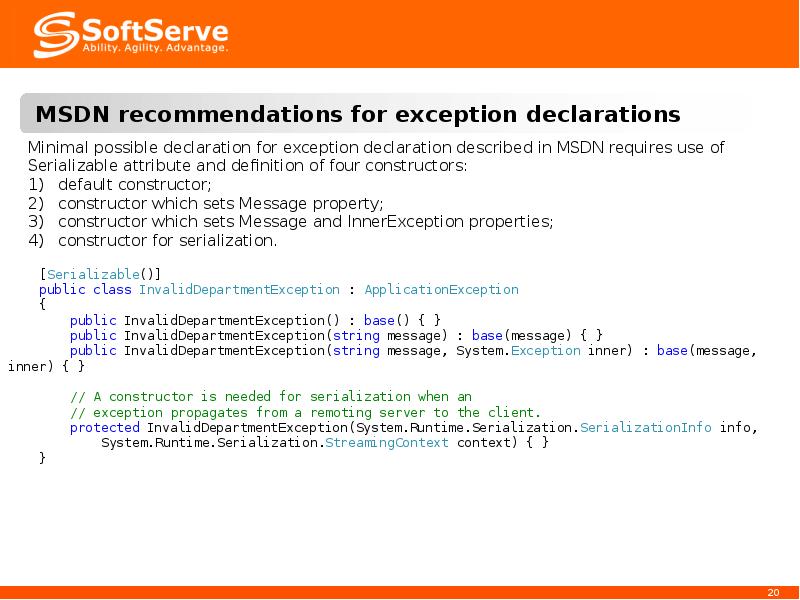
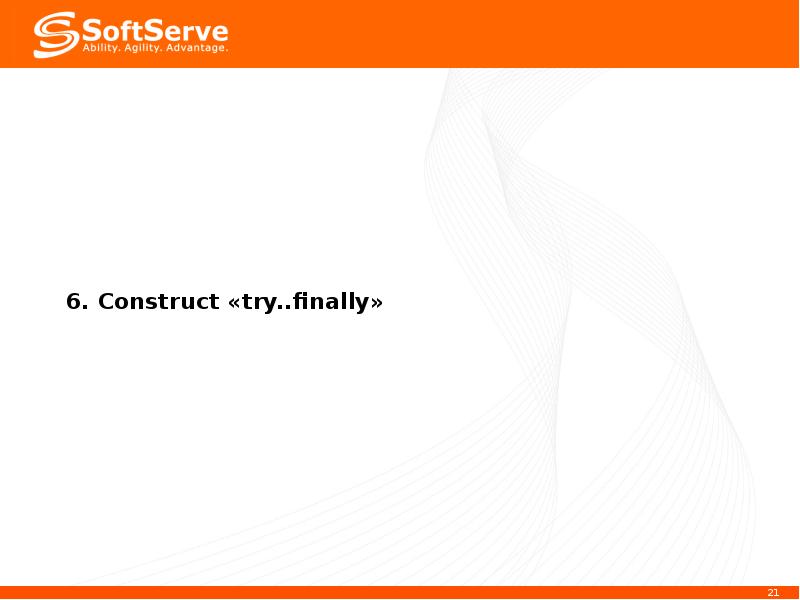
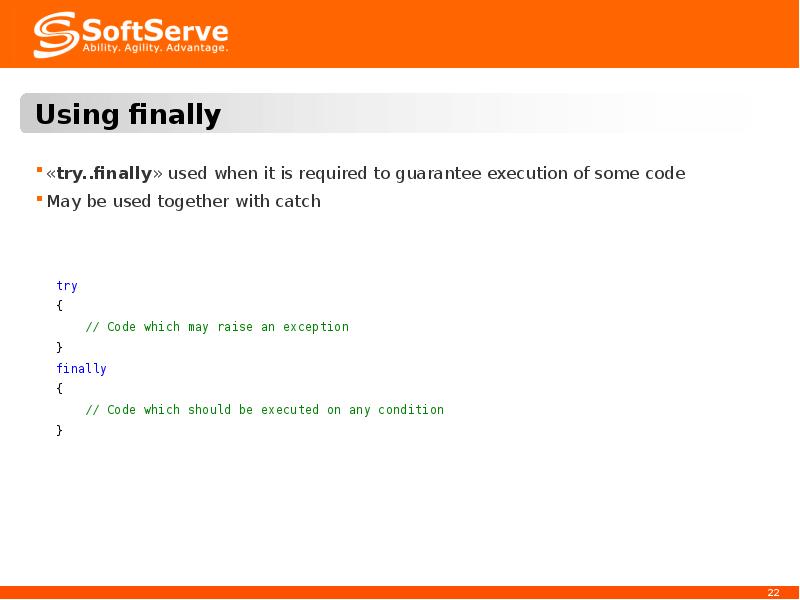
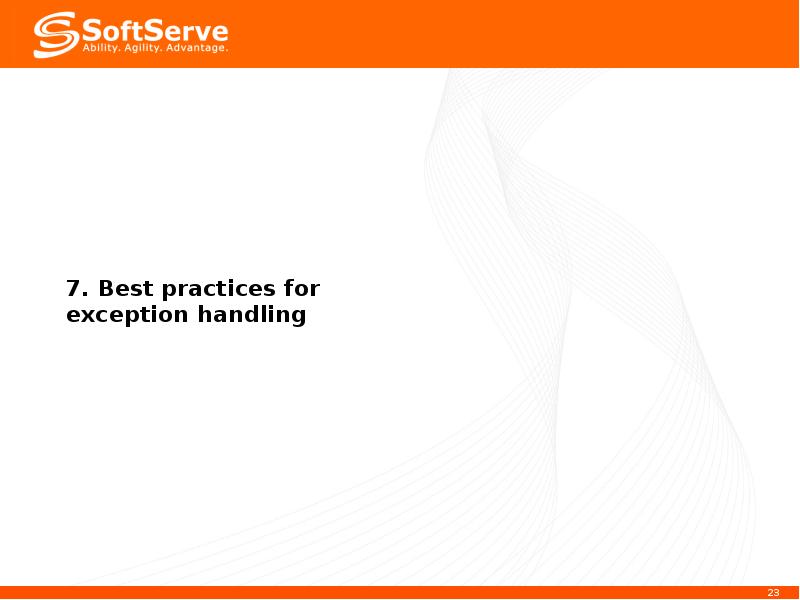
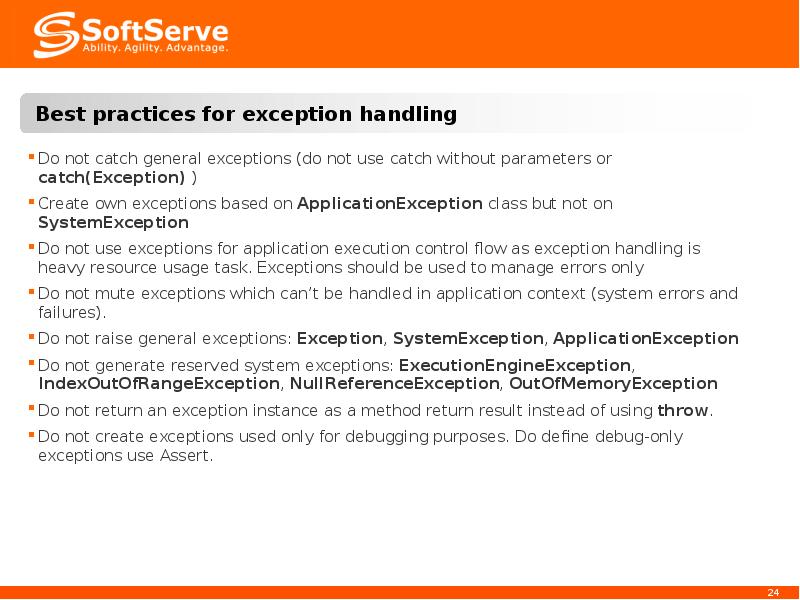
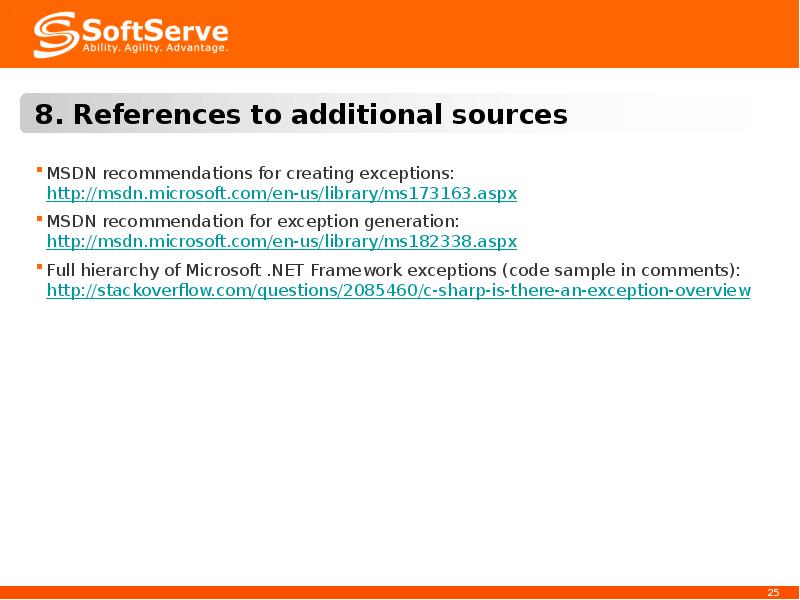
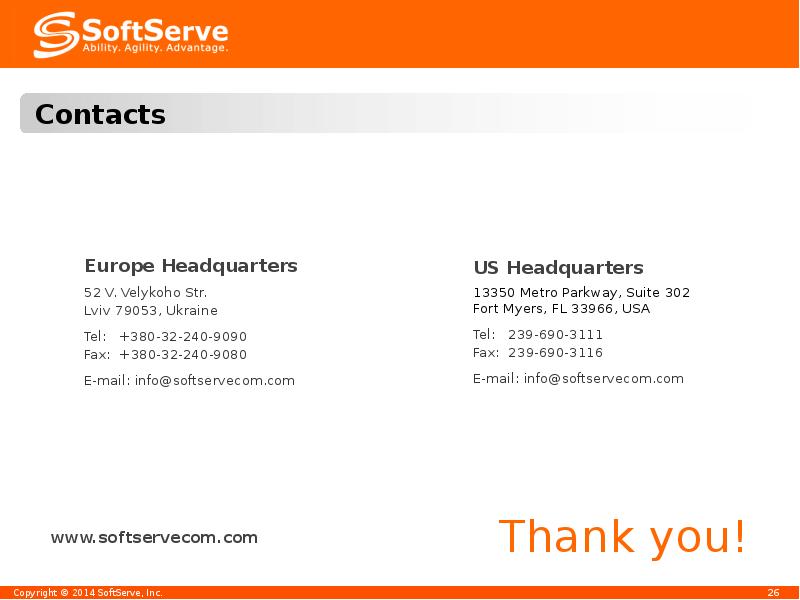
Слайды и текст этой презентации
Скачать презентацию на тему Exception Handling in .NET Framework можно ниже:
Похожие презентации





























